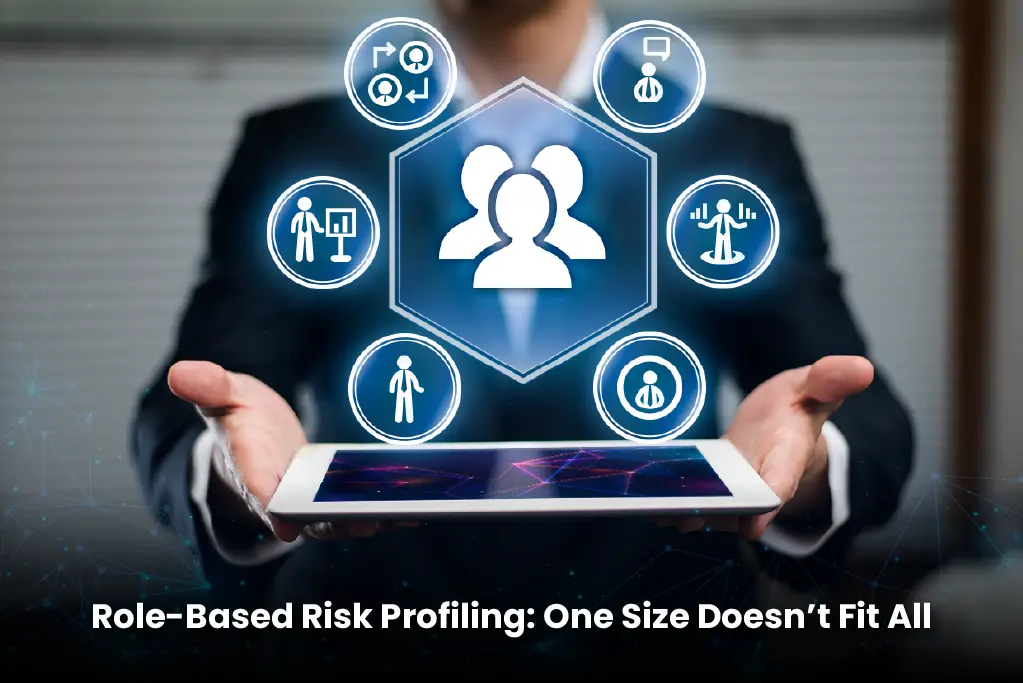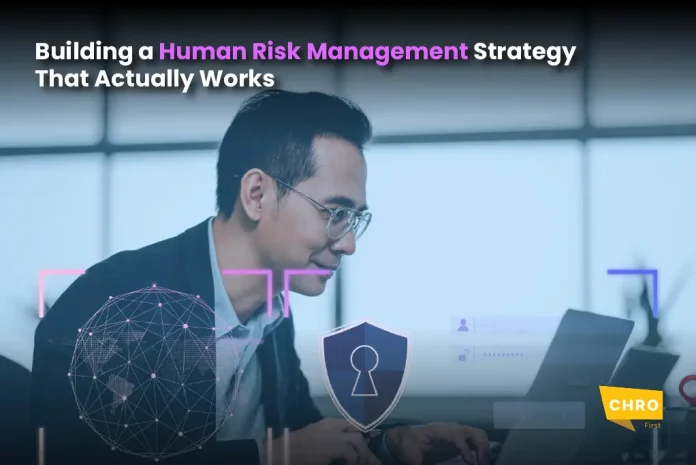Insider threats and human error are the most persistent risks to organisational resilience. Yet many HR and risk management strategies still treat people as a risk to be managed, rather than a critical line of defence. As work becomes more distributed, hybrid and digitally connected, the human layer of risk has become more complex and more urgent to address.
A modern human risk management (HRM) strategy requires more than compliance training or surveillance policies. A human-focused approach is the key. It blends behavior insights, culture design, risk profiling, and teamwork. This article explores how HR leaders can own this agenda and build risk strategies that don’t just exist on paper but actually change outcomes.
Understanding the Human Risk Landscape
Most enterprise risk models focus on external threats, cyber-attacks, vendor failure, supply disruption. But internal risks from employees can be very harmful. Their actions, accidental or not, may lead to data loss, fraud, or damage to reputation.
These risks are hard to mitigate because they don’t always show up as technical red flags. Fatigued employees may bypass processes. Disengaged teams may not report anomalies. And disillusioned insiders may exploit their access for personal gain.
Traditional controls like background checks or annual compliance training are no longer sufficient. The behavioural risk surface is dynamic, influenced by workload pressure, organisational culture, digital tools and leadership trust. HR is uniquely positioned to interpret and manage these variables if it adopts a risk-oriented lens.
Moving Beyond Policy to Behavior
Most human risk strategies begin with policy, codes of conduct, acceptable use guidelines, ethics declarations. While foundational, these tools assume awareness leads to compliance. In reality, behaviour is shaped by environment, culture and cognitive load far more than by formal rules.
Effective HRM strategies examine how daily work conditions contribute to risky behavior. Are employees pressured to bypass protocols to meet deadlines? Is there psychological safety to report suspicious behavior or process failures? Are frontline managers equipped to recognize risk-prone situations?
HR teams are now applying behavioural science to design interventions that nudge safer behaviour. This includes adjusting incentives, clarifying role expectations and reducing ambiguity in process steps. It also means embedding risk conversations into team culture, where compliance is seen not as a barrier but as a norm.
Role-Based Risk Profiling: One Size Doesn’t Fit All

Not all employees carry equal risk exposure. A software engineer with access to production environments, a finance manager handling payments, and a contractor using personal devices each pose different types of risk.
Leading organizations are adopting role-based risk profiling to tailor controls and support. This involves mapping behavioral risk factors, such as access level, third-party status, digital activity, and organizational tenure, and assigning risk scores or tiers accordingly.
For high-risk roles, interventions may include more frequent check-ins, targeted scenario training, or layered access controls. For low-risk roles, simpler guardrails may suffice. The goal is not to over-police, but to apply proportionate risk mitigation while preserving productivity and trust.
The Role of Culture in Mitigating Human Risk
Culture is a powerful risk driver. In a rigid or opaque environment employees may not want to speak up about mistakes or challenge risky decisions. In a too permissive culture informal practices will override formal policy. In both cases, latent risk goes unreported and unresolved.
HR’s role in shaping culture is key to a working risk strategy. Encouraging open communication, ethical leadership and high trust environments reduces the likelihood of silent failure. Just as importantly it allows risk intelligence to flow through informal networks before an incident reaches formal escalation. Internal feedback loops, anonymous reporting channels and recognition of risk aware behaviour will further reinforce a culture that protects not exposes the organisation.
Also Read: The Productivity Paradox: Why More HR Tech Isn’t Driving Better Performance
Cross-Functional Collaboration Is Critical
Human risk doesn’t sit in HR or security, it’s across people, process and technology. To manage it effectively, HR leaders need to work with cybersecurity, compliance, legal and line of business functions. This ensures risk visibility is complete and interventions are coordinated not siloed.
Joint risk councils or working groups are becoming a best practice. These groups review incident data, share insights on emerging behaviour patterns and align interventions across functions. For example, if cybersecurity detects repeated policy bypasses by a department, HR can look into the underlying causes such as unclear processes or workload stress.
Clear governance frameworks define accountability. Security leads may handle access and monitoring. Compliance may oversee regulatory exposure. But HR is responsible for shaping behaviour, supporting managers and making sure risk reduction doesn’t erode employee trust or morale.
At SAP Sapphire 2025, SAP introduced People Intelligence, a new analytics layer built into SAP Business Data Cloud. It unifies workforce, skills, and operational data with AI-driven dashboards and insights, enabling HR teams to forecast risks, monitor engagement, and identify teams that may need targeted interventions.
Using Analytics to Detect Risk Early

Behavioural anomalies often precede major insider incidents. Changes in login patterns, access frequency, communication tone or productivity levels can signal higher risk. But without the ability to interpret these signals in context organizations may either miss threats or overreact to harmless behaviour.
HR can play a key role in contextualising data through behavioural analytics. Combined with digital activity logs (under strict privacy protocols), HR systems can identify indicators such as declining engagement, policy noncompliance or increased internal mobility. These indicators are not proof of malicious intent, but they can highlight where support, clarification or intervention may be needed.
To avoid misuse, leading organizations apply strict ethical and legal filters. Employees are informed of monitoring practices, thresholds are set carefully and data is used to guide conversations not punitive measures. This helps strike a balance between vigilance and transparency.
During Microsoft Secure 2025, Microsoft launched the Conditional Access Optimization Agent within Entra ID, now generally available as of July 2025. This AI-powered agent continuously scans for gaps, overlaps, and outdated access policies, then recommends one‑click remediations, removing both friction and risk.
Turning Insights Into Action
Insights alone don’t reduce risk. Actionable programmes are needed to turn signals into outcomes. Key steps include focused training and behavior campaigns. Manager coaching and process redesign also help reduce risk. HR must act as both analyst and change agent, interpreting what the data says and building initiatives that shift behaviour sustainably.
For example, if behavioural data shows burnout risk in a critical team, HR can work with leadership to adjust workloads or provide support. If compliance feedback reveals confusion around acceptable collaboration tools, HR can refine onboarding and reinforce messaging through regular touchpoints. And interventions are measured for impact. Are risk scores dropping after coaching? Are managers escalating concerns faster? Are process exceptions decreasing over time? A human risk strategy is only as good as its ability to adapt to what works.
Conclusion
Human risk is no longer a soft issue, it’s a core operational risk with real financial, legal and reputational implications. HR leaders who treat it as a discipline not a checkbox are better at protecting people and performance. By applying behavioural science, contextual analytics and cross-functional governance, HR can move beyond reactive enforcement to proactive risk mitigation. The strategy spots where risks may start. It also builds systems to stop them before they happen.

